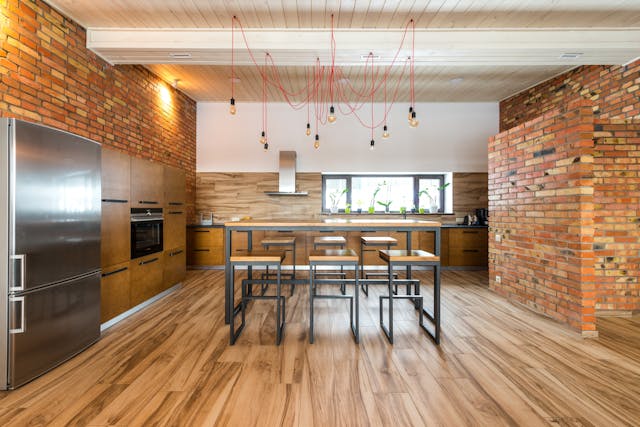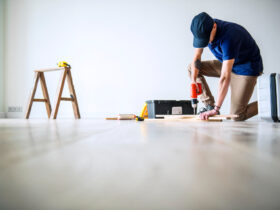A home isn’t just walls and a roof. It’s where mornings begin, meals get shared, and nights wind down. Over time though, even cared-for spaces wear down. Paint dulls, floors squeak, kitchens don’t work like they used to. Roofs leak or trap heat. The house that felt fine starts to feel like it needs work. Renovation then isn’t only about style, it’s about making it livable again. Some families gut entire rooms, others stick to key upgrades. Both ways can make a tired house feel alive. In this blog, we will share how to approach it so the changes really work for the people living there.
Plan Before Anything Else
It’s tempting to just start, but planning saves headaches. Without it, jobs drag on and cost more. Think about how every space gets used now. Are closets always crammed? Do rooms feel boxed off and unused? Some corners never see any action because they’re dark or tight, right? These things decide what matters first.
Budgets need to be blunt. It’s easy to dream too big. A written cost breakdown keeps everything in check. Some big ideas wait. Some smaller projects can still make a huge difference, and those stack up over time. A phased plan beats leaving a half-finished mess.
Check the Roof Before Trouble Spreads
Roofs get overlooked until they can’t be ignored. If yours is 15 years old or more, or the shingles curl, or there are water stains inside, it’s time to think about fixing or replacing. Bills creeping up for heat or AC can point to the same problem.
Yes, it costs, but a new roof often pays off. It lifts curb appeal, cuts energy loss, and helps when selling later. The work should be handled by someone who knows what they’re doing. A roof replacement company with real reviews and a warranty beats someone offering the lowest bid. No one wants to redo the job because corners got cut.
Open Spaces Where It Counts
Older houses feel chopped up. Lots of walls, small rooms. Even bigger ones seem cramped that way. Opening the layout can change the whole mood. A kitchen flowing into dining and living space makes the home feel connected.
Not every wall can go. Some keep the house standing. Those can come out if beams or posts are added, but even small changes help. A wider doorway or a pass-through window can open sight lines and make rooms breathe more.
Update the Kitchen Bit by Bit
The kitchen sees the most use and takes the most abuse. Cabinets chip, counters wear, layouts stop working. Full remodels cost a lot, but they’re not always needed.
Simple steps like new counters, painted cabinets, or better lights can give the space a lift. Appliances over ten years old are worth replacing. They eat more energy and break down more. Modern models save money and work better.
Fix Floors That Drag a Room Down
Floors make a first impression the second someone steps in. If they’re scratched, stained, or cracking, it doesn’t matter how fresh the paint is. Everything feels older.
New flooring can change that fast. Why repaint or redecorate when the ground beneath still looks beat up?
Bring Bathrooms Back to Life
Bathrooms go stale fast. Fixtures age, lights feel dim, air gets damp. Mornings start there, so why make it harder? Even small changes can really shift a bathroom. Day to day. Water-saving toilets get put in. Faucets too. Bills drop. The space feels fresher, no full remodel needed. An exhaust fan, when done right, pulls out damp air. Cuts down mold. The room doesn’t stay stuffy or smell off. Brighter lights. Bigger mirrors. A few shelves. All add function without ripping into walls. Bigger jobs, like adding a walk-in shower or turning a half-bath into a full one, can help families for years. Raise the home’s value too. Isn’t comfort the whole point here?
Let in More Light
Light changes how every room feels. A dark house feels smaller and less inviting. Older ones usually rely on tiny windows or heavy curtains. Bigger windows or a glass door can breathe new life into a home.
If tearing out walls isn’t an option, lighter paint, sheer curtains, and mirrors still work. They push light around and make spaces open up. Sometimes, even small tricks like replacing a solid door make a big difference.
Make the Outside Match the Inside
What’s seen first shapes how a home feels before anyone steps in. If the outside looks neglected, it drags the rest down. Cleaning up the yard, trimming overgrown plants, and power washing the siding help right away.
New paint, a solid front door, and working gutters make the home feel cared for. Bigger updates like siding replacement or stone accents, if the budget allows, can turn things around completely. The exterior should hint at the comfort inside, don’t you think?
Renovating a house that’s starting to feel worn can seem like a heavy lift, though it doesn’t have to feel overwhelming. Work done in stages makes it easier to manage. One change supports the next so progress builds instead of feeling scattered. A new roof keeps the rest safe and dry. Solid flooring gives every room a cleaner base, while added light makes the whole place feel more open, but you know what? Kitchens and bathrooms can play a massive role as well. Once they’re done, daily routines feel smoother. Less hassle. These changes don’t all need to land at once. They can roll out over months. Even years. The house shifts slow, not in one big leap. It feels gradual, natural. At some point, without anyone noticing, the place stops feeling worn. It starts feeling like home again. Somewhere people want to return every day.







Leave a Reply